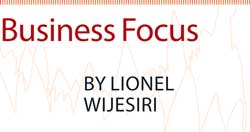11 Dec 2017 - {{hitsCtrl.values.hits}}
Unleashing your leadership potential for breakthrough results

 Any change to a process is only successful in the long run if all the stakeholders truly adopt and sustain the change. Process and technology improvements cannot be implemented without a change in the hearts, minds and behaviours of the people involved in the change.
Any change to a process is only successful in the long run if all the stakeholders truly adopt and sustain the change. Process and technology improvements cannot be implemented without a change in the hearts, minds and behaviours of the people involved in the change.
Although well-defined and intentioned, many improvement projects often lose focus once a solution is found. Naturally, organisations seek to discover why their best-laid plans have derailed.
Their efforts typically focus on the problem of implementation but often fail to consider how the proposed improvements would be integrated into their employees’ daily work. Once a solution is found, organisations tend to push the new process on the system and the workforce. As people come to grips with unfamiliar concepts, ideas and processes, it’s not uncommon for those who work within the system to become sceptics, procrastinators or even active resisters.
Those who study human behaviour discover a tension within many individuals who suffer an internal conflict. On the one hand, people want to improve their lives but at the same time, they want a life that is stable and without chaos – therein lies one of the primary sources of the problem. Many organisations have a history of unsuccessful change efforts, which cause some to become cynical and resistant to change due to fear and anxiety.
Fear and anxiety are natural responses to change but can be addressed with openness or what is known as ‘walk the talk’. Organisations must create a culture in which people can speak their minds without fear of reprisal. The management must drive out fear in the workplace so everyone can work effectively.
Any organisational change must be integrated slowly to give employees time to adapt. Change processes must invade a culture through a pilot effort, which can then expand to other parts of the organisation with greater success and less resistance than before. Organisational change is very similar to an antibiotic attacking a virus. When a patient takes a drug daily, he or she slowly builds up an antibody to attack the virus. The virus invites the drug into its system and the drug begins to kill the virus. Health returns to the patient as it would in an organisational culture.
Five phases of roadmap
The five phases of the roadmap for reinforcement are (1) decide, (2) prepare, (3) launch, (4) expand and (5) sustain. Each phase is independent of the others and each part of an organisation will respond differently to the changes taking place. This means one unit can remain in one phase longer than another.
Decide phase – Begins when the executive team concludes change is needed if the organisation is to meet constituent expectations. It ends when a decision is made to prepare a clear plan for change.
To understand the level of improvement needed, an organisation must have new or better information about itself. A good quality system review will provide the needed data about customers, culture, strengths, performance problems, attitudes toward change, key business processes, cost analysis of poor performing products and services and the determination of the business case for change.
From these assessments, the executive team should have the qualitative and quantitative information needed to define an implementation plan. The plan must include an infrastructure to steer the changes, methodology and tools to be used, goals and objectives and a detailed plan for achieving results.
Prepare phase – The executive team should develop a pilot effort to test changes in a few business units before implementing the changes in the total organisation. This phase begins by deploying the plan created in the ‘decide’ phase and ends after a successful launch of pilot projects.
Launch phase – The organisation identifies potential improvement projects that must be carried out to meet the desired goals, launches pilot projects, reviews progress and enables success. As projects are completed, the executive team evaluates what did and didn’t work and it either abandons elements or makes changes and expands the plan throughout the organisation.
Expand phase – It can take months to deploy if the organisation’s employees are in the hundreds or three to five years for an international company with thousands of employees. Positive financial results will occur long before cultural changes take place. Staying in the expand phase isn’t a bad thing. An organisation must continue to implement change unit by unit until the entire enterprise has had time to implement all of the desired changes.
Sustain phase – This occurs when an organisation has a fully integrated operation and all improvements and goals are aligned with the established strategy and deployment plans. Key business processes are defined and process owners are assigned to manage each unit.
Employee performance reviews and salary reviews should align with the changes that were made and the responsibilities in place. Those who comply should be rewarded or desired behaviour changes won’t take place and the organisation will risk the loss of loyalty and compromise the credibility for change.
Top management and unit managers must conduct regular reviews and audits of the change processes and consider whether changes or new strategies are needed.
The ‘sustain’ phase will help the organisation learn more about its capabilities as well as its customers and other constituents. This process may also lead to changes in strategies. The phase endures as long as the organisation meets its financial goals.
Once financial savings have been achieved, the challenge is to control the process so that benefits are maintained year after year. At this point, organisational changes should be minimized.
Many organisations make changes but don’t complete enough projects to affect the bottom line positively or the organisation’s culture for any noticeable change.
Management personnel at all levels must be professional leaders. Unless there’s committed leadership and a sense of urgency, breakthrough improvement efforts will provide disappointing results. Vague definition of goals will fail to provide the needed legitimacy. Lack of direct involvement by management can cost two to three years of delay, divisiveness and lost credibility.
Managers must identify opportunities for improvement, mobilize the resources and skills to capitalize on those opportunities and make wise choices of the tools and techniques to meet goals.
An efficient roadmap can help any organisation make breakthrough improvements continuously.
Few more tips to make this journey fruitful:
As a result of these actions, the employees will become more comfortable with the changes they had to make. They will communicate more frequently with one another and begin developing continuous improvement solutions as a normal part of their work.
(Lionel Wijesiri is a retired corporate director counting three decades of senior management experience. He is now an independent consultant and a freelance journalist. He may be contacted on [email protected])
28 Nov 2024 35 minute ago
28 Nov 2024 1 hours ago
28 Nov 2024 2 hours ago
28 Nov 2024 4 hours ago
28 Nov 2024 5 hours ago